These days, we’ve got a lot of options for carrying the necessities with us on our rides, but mountain bike hip packs are easily one of the best. Tools, tubes, water, food, first aid, layers, keys, and even our phones all need to go somewhere, and hip packs are an excellent way to hold it all conveniently strapped around your waist.
Hip packs have steadily evolved over the years into a specialized accessory for the modern mountain biker. Whether you prefer to carry water in hydration bladders or bottles, carry the bare minimum of tools and gear, or bring everything but the kitchen sink, there are hip packs designed to suit every need and preference.
With so many mountain bike hip packs to choose from, finding the right one can be a challenge. To help navigate the choices, we rounded up a diverse selection of 12 models for side-by-side testing and comparison. We loaded each pack up with water, tools, and gear to assess their cargo capacity, hydration capabilities, and organizational layouts before hitting the trails to analyze their comfort, stability, and performance while riding.
From the top-rated Evoc Hip Pack Pro 3 to the budget-friendly Patagonia Dirt Roamer Waist Pack, our top mountain bike hip pack recommendations are listed below.
Editor’s Note: We updated this guide on October 7, 2024, with the addition of the U.S.-made High Above Venture hip pack and our new Price & Value section.
The Best Mountain Bike Hip Packs of 2025
Best Overall Mountain Bike Hip Pack (With Bladder)
Evoc Hip Pack Pro 3 + 1.5L Bladder
Best Budget Mountain Bike Hip Pack (No Bladder)
Patagonia Dirt Roamer Bike Waist Pack 3L
- Weight: 431 g (w/o bladder) 562 g (w/ bladder)
- Storage capacity: 3 liters
- Water bladder: Yes, 1.5 L
- Water bottles: Yes, up to 2
- Waist sizes: 31" to 43"
Pros
- Excellent stability
- Stretch waist belt is comfortable
- Well ventilated back panel
- Great organization
- Medium volume is great for most rides
- Options to carry water in bladder or bottle (or both)
Cons
- Expensive
- 3 liter storage capacity may be too small for longer rides or people who like to carry lots of gear
- Weight: Pack: 303 g, Fidlock bottle: 103 g
- Storage capacity: 2.2 liters
- Water bladder: No
- Water bottles: Yes, 1 (up to 2)
- Waist sizes: Not specified, but there is a wide range of adjustment
Pros
- Magnetic buckles are quick and easy to use
- Clean, minimalist aesthetic
- Made in the USA
- Tough materials
- Easy access to contents
- Good organization
Cons
- No pockets on hip wings
- Moderately expensive
- Fairly small storage capacity
- Weight: 245 g
- Storage capacity: 3 liters
- Water bladder: No
- Water bottles: Yes, 2
- Waist sizes: 27" to 46"
Pros
- Lightweight
- Secure and stable with or without bottles
- Comfortable
- External straps allow easy mounting of bulkier items
- Surprisingly large capacity from smart layout
Cons
- No water bladder (could be a pro depending on preference)
- Weight: 442 g (w/ bladder)
- Stoage capacity: 4 liters
- Water bladder: Yes, 1.5L
- Water bottles: No
- Waist sizes: 27” to 42”
Pros
- Great airflow through mesh hips and “Airscape” back panel
- Simple bladder and routing makes refills quick
- Adjustable nozzle speed
- Bladder “handle” is a nice touch, makes filling and installing the bladder very easy.
- Easy to find old colors on sale at a discount
Cons
- Simple layout – there is really only one main section with a zippered internal pocket
- No hip pockets
- Weight: 510 g (w/ bladder)
- Storage capacity: 6 liters
- Water bladder: Yes, 1.5L
- Water bottles: No
- Waist sizes: 31” to 40”
Pros
- Full length padded belt
- Zip pockets on waist belt for easy access while riding
- Comfortable
- Excellent stability while riding
Cons
- More expensive
- Bladder is a tight fit to get into pack when full
- Heavy branding
- Weight: 216 g
- Storage capacity: 1.64 liters
- Water bladder: No (bladder version available)
- Water bottles: Yes, 1
- Waist sizes: 24" to 42"
Pros
- Effective minimalist approach, enough room for the essentials
- Tightening strap by pulling forward makes extra waist webbing management easy
- Incredibly stable and comfortable – you hardly notice you’re wearing it
- Lightweight
Cons
- Not great for carrying larger, bulkier, or longer items
- Lower overall capacity – not the best for longer rides or large items
- Weight: 532g (w/ bladder)
- Storage capacity: 4 liters
- Water bladder: Yes, 1.5L
- Water bottles: No, not securely
- Waist sizes: 31” to 40”
Pros
- Thick, comfortable waistband
- Long magnetic strip catches hydration hose and nozzle well
- Good organizational strategy, if you use it as intended
- Very streamlined and tidy look
Cons
- Layout and low profile design makes capacity feel smaller than it is, very structured and not very flexible
- Friction fitting on hose/bladder connection – challenging to remove bladder from pack
More Mountain Bike Hip Packs To Carry Your Gear
- Weight: 710 g (w/ bladder)
- Storage capacity: 5 liters
- Water bladder: Yes, 1.5L
- Water bottles: Yes, 1
- Waist sizes: 25” to 42”
Pros
- High usable volume
- Stowable strap included for attaching items externally
- Comfortable back contact and wide hip band
- Quick connect hose makes filling/cleaning bladder easy
- Rotational nozzle lock works very well
Cons
- Not the most stable hip pack for aggressive riding or rough terrain
- Not the easiest pack to put on/take off quickly with the mesh/velcro belt
- Heavier weight
- Weight: 495 g (w/ bladder)
- Storage capacity: 3 liters
- Water bladder: Yes, 1.5L
- Water bottles: No
- Waist sizes: 30” to 48”
Pros
- Well ventilated back panel
- Stable
- Great bladder management and quick release bladder/hose connection
- Well organized
Cons
- Small hip pockets
- No water bottle carry option
- Difficult to tighten straps when the pack is on
- Weight: 387 g
- Storage capacity: 2.72 liters
- Water bladder: No
- Water bottles: Yes, with detachable bottle holder (up to 2)
- Waist sizes: 24" to 48"
Pros
- Middle of the road capacity, large compartment is roomy enough for everything we usually needed
- Good main pocket compartmentalization
- Fairly water resistant with neoprene lined phone pocket
- Soft backing, comfortable and secure
- Good value
Cons
- Detachable water bottle pockets are not the most stable while riding
- Weight: 460 g (w/ bladder)
- Storage capacity: 5 liters
- Water bladder: Yes, 2L
- Water bottles: No
- Waist sizes: Not specified
Pros
- 2 liters of water storage
- External straps for knee pads or extra layer
- Lots of color options
- Fleece lined pocket on belt fits phone
- Less expensive than many other models that come with bladders
Cons
- Doesn't hold shape well when fully packed
- Full water bladder takes up quite a bit of the storage space
- Weight: 370 g
- Storage capacity: 2 liters
- Water bladder: No
- Water bottles: Yes, up to 2
- Waist sizes: Not specified
Pros
- Minimal design for carrying just the essentials
- Good waist strap management
- Bottle sleeves compress when not in use for streamlined look
- Stable – even with 2 full bottles
Cons
- No pockets on waist band
- Small capacity – best for shorter rides and warmer temps
- Only comes in black
Best Mountain Bike Hip Packs Comparison Chart
| Hip Pack Model | MSRP | Weight | Storage Capacity | Bladder | Bottles | Waist Size Range |
|---|---|---|---|---|---|---|
| Evoc Hip Pack Pro 3 + 1.5L Bladder | $150 | 562 g (w/ bladder) | 3 liters | Yes, 1.5L (also sold without) | 2 | 31″ to 43″ |
| High Above Venture | $135 (+$25 for Quickdraw) | 303 g (Fidlock bottle: 103 g) | 2.2 liters | No | 1 (up to 2) | Not specified |
| Patagonia Dirt Roamer Waist Pack 3L | $69 | 245 g | 3 liters | No | 2 | 27″ to 46″ |
| Osprey Seral 4 | $90 | 442 g (w/ bladder) | 4 liters | Yes, 1.5L | No | 27″ to 42″ |
| USWE Zulo 6 | $145 | 510 g (w/ bladder) | 6 liters | Yes, 1.5L | No | 31″ to 40″ |
| Bontrager Rapid Pack | $68 | 216 g | 1.64 liters | No (bladder version offered) | 1 | 24″ to 42″ |
| Thule Rail 4 | $100 | 532 g (w/bladder) | 4 liters | Yes, 1.5L | No | 31″ to 40″ |
| Deuter Pulse Pro 5 | $125 | 710 g (w/ bladder) | 5 liters | Yes, 1.5L | 1 | 25″ to 42″ |
| Evoc Hip Pack 3L + 1.5L Bladder | $120 | 495 g (w/ bladder) | 3 liters | Yes, 1.5L | No | 30″ to 48″ |
| PNW Rover Hip Pack | $79 | 387 g | 2.72 liters | No | 1 (up to 2) | 24″ to 48″ |
| Dakine Hot Laps 5L | $100 | 460 g (w/ bladder) | 5 liters | Yes, 2L | No | Not specified |
| Fox Standard Hip Pack | $70 | 370 g | 2 liters | No | 2 | Not specified |
How We Tested Mountain Bike Hip Packs

Our Expert Testers
Our Testing Process

Buying Advice: How to Choose the Best Mountain Bike Hip Pack
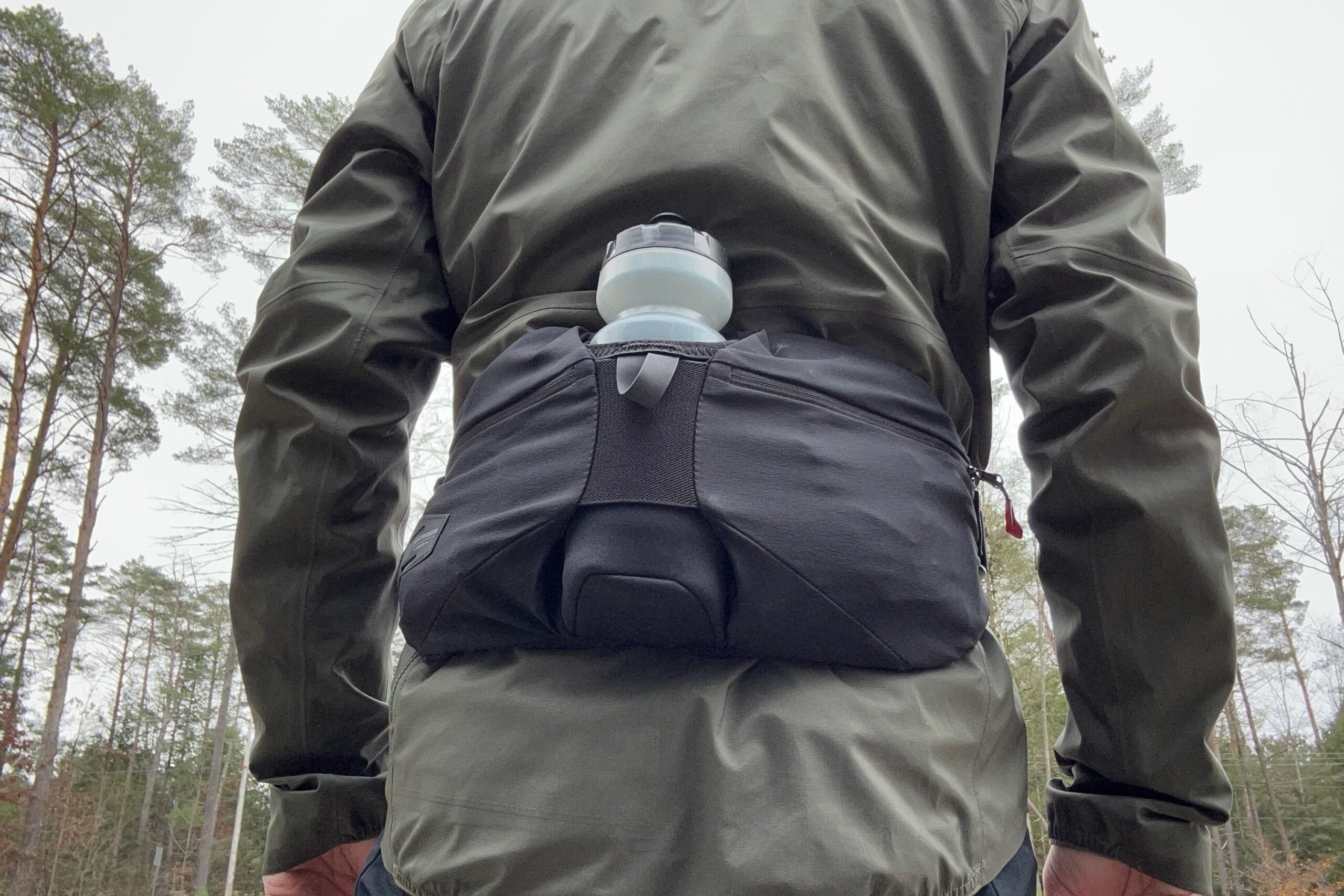
Cargo Capacity
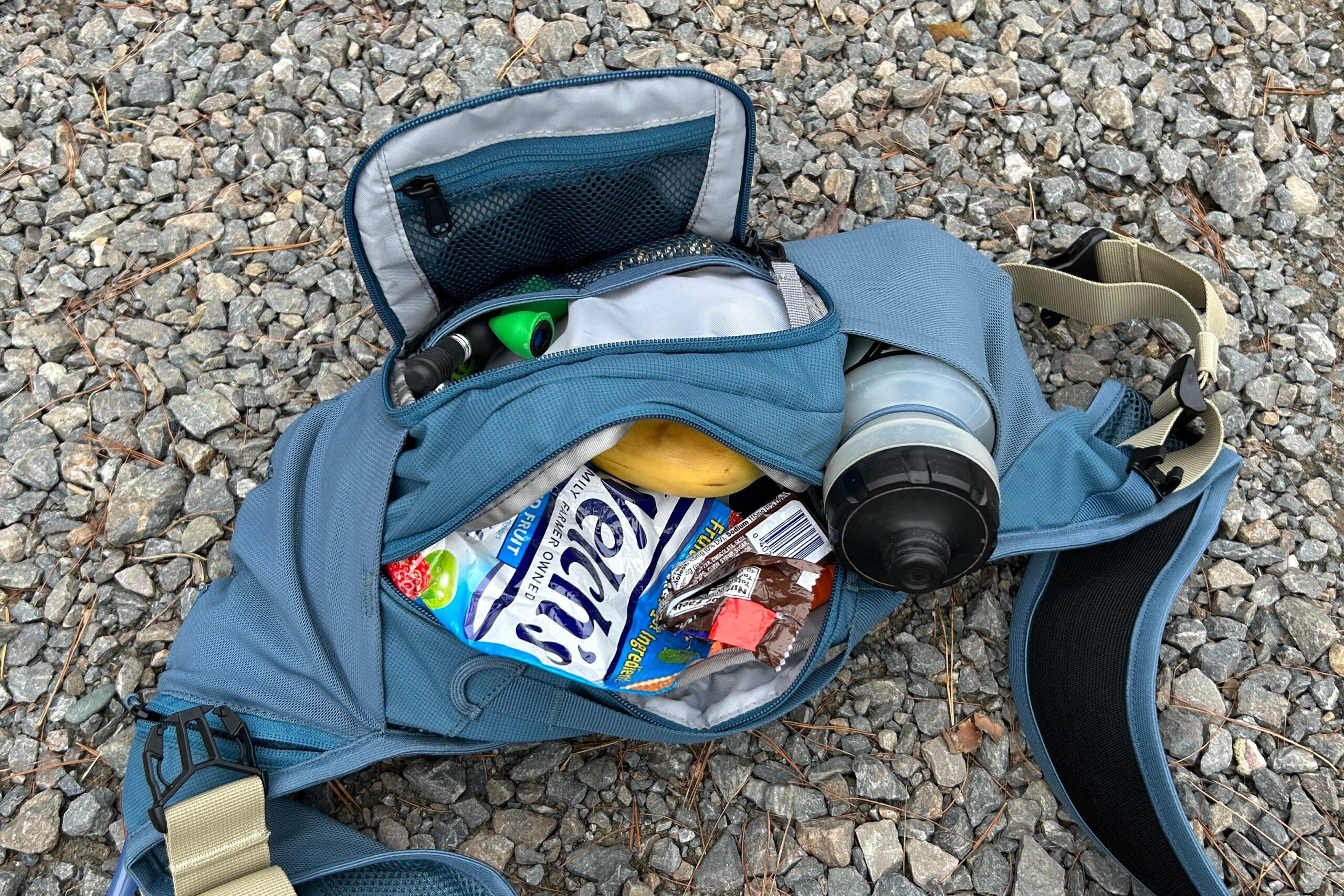

Storage Layout
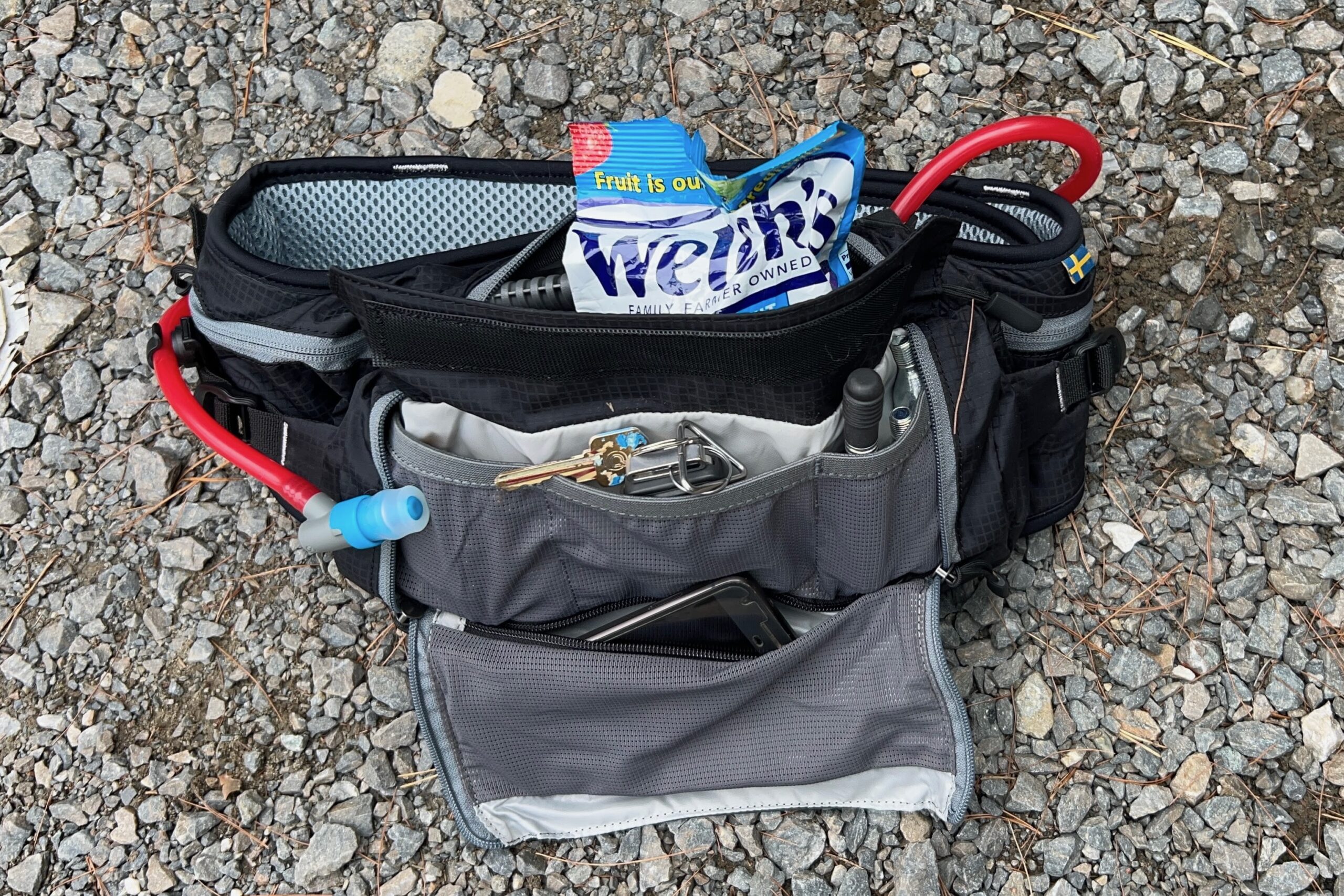

Hydration Style
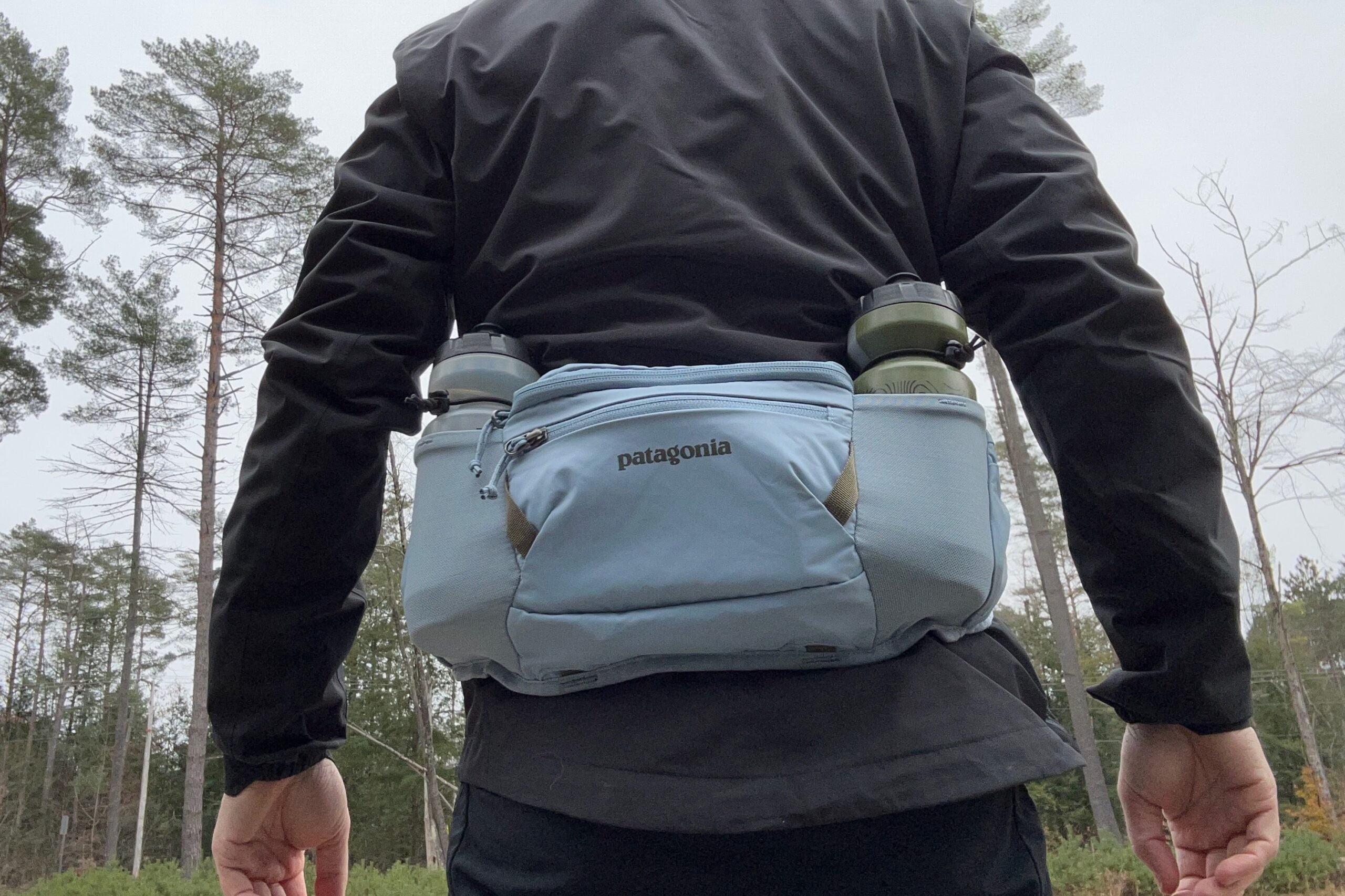
Bottles

Bladder
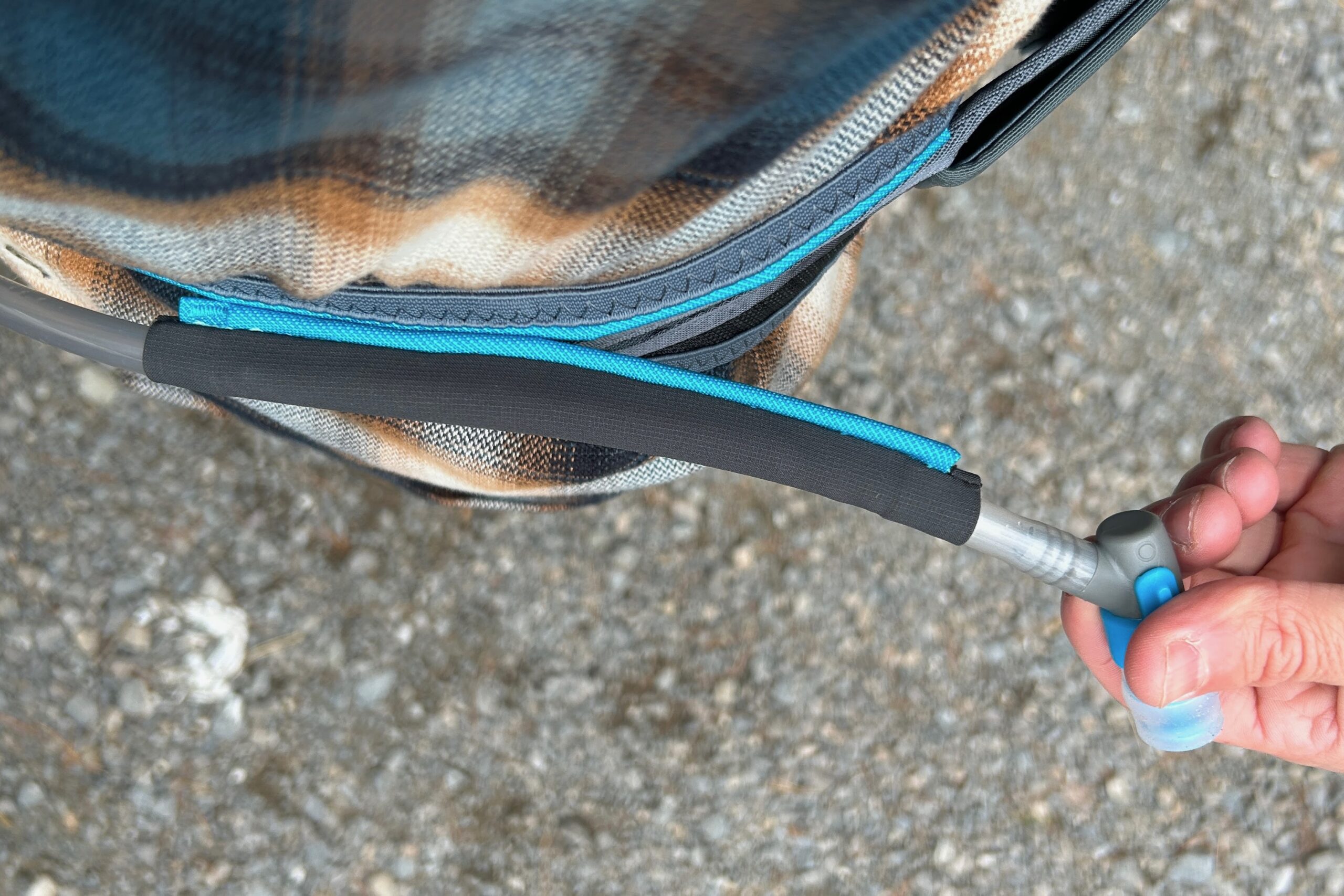
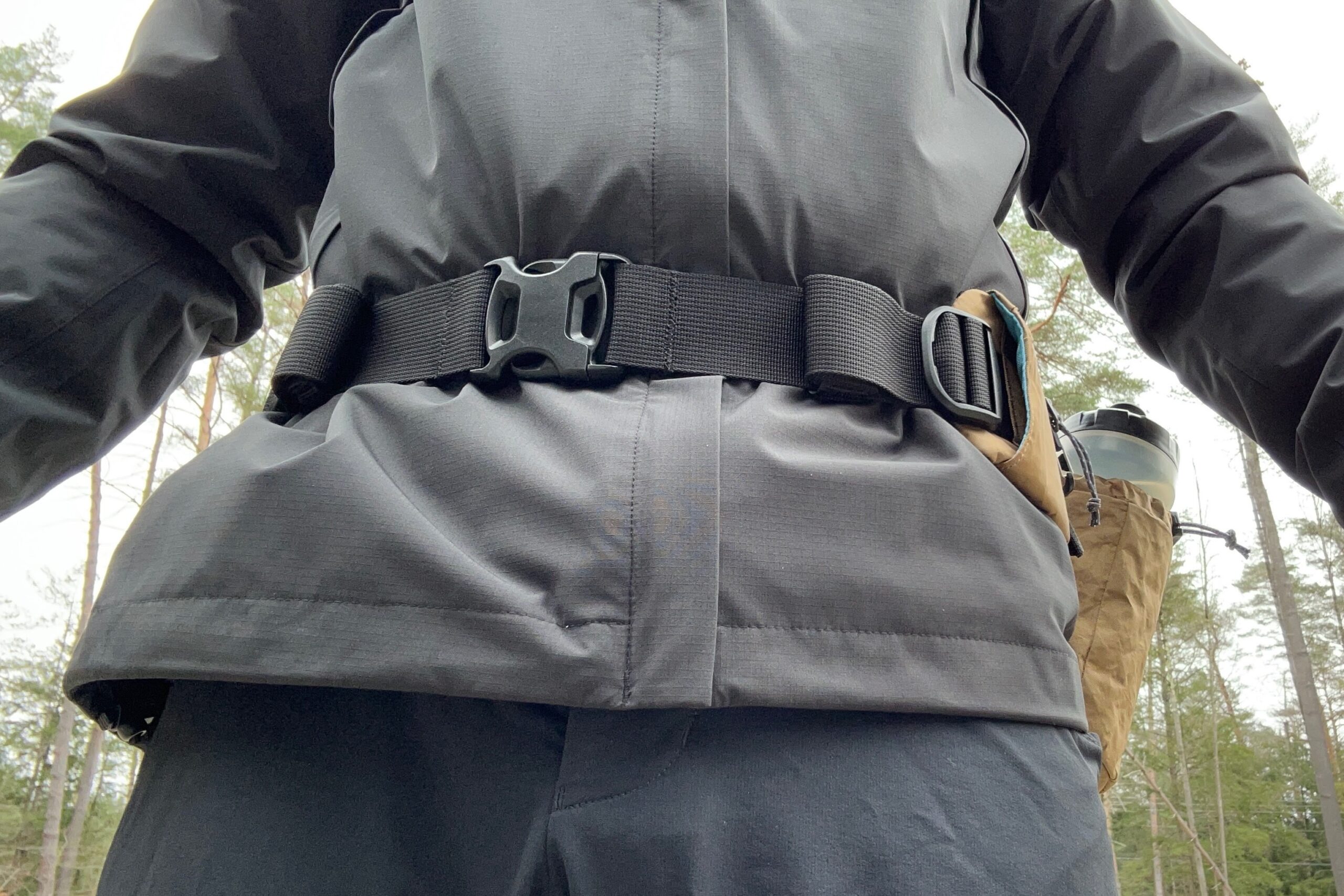
Waist Belts
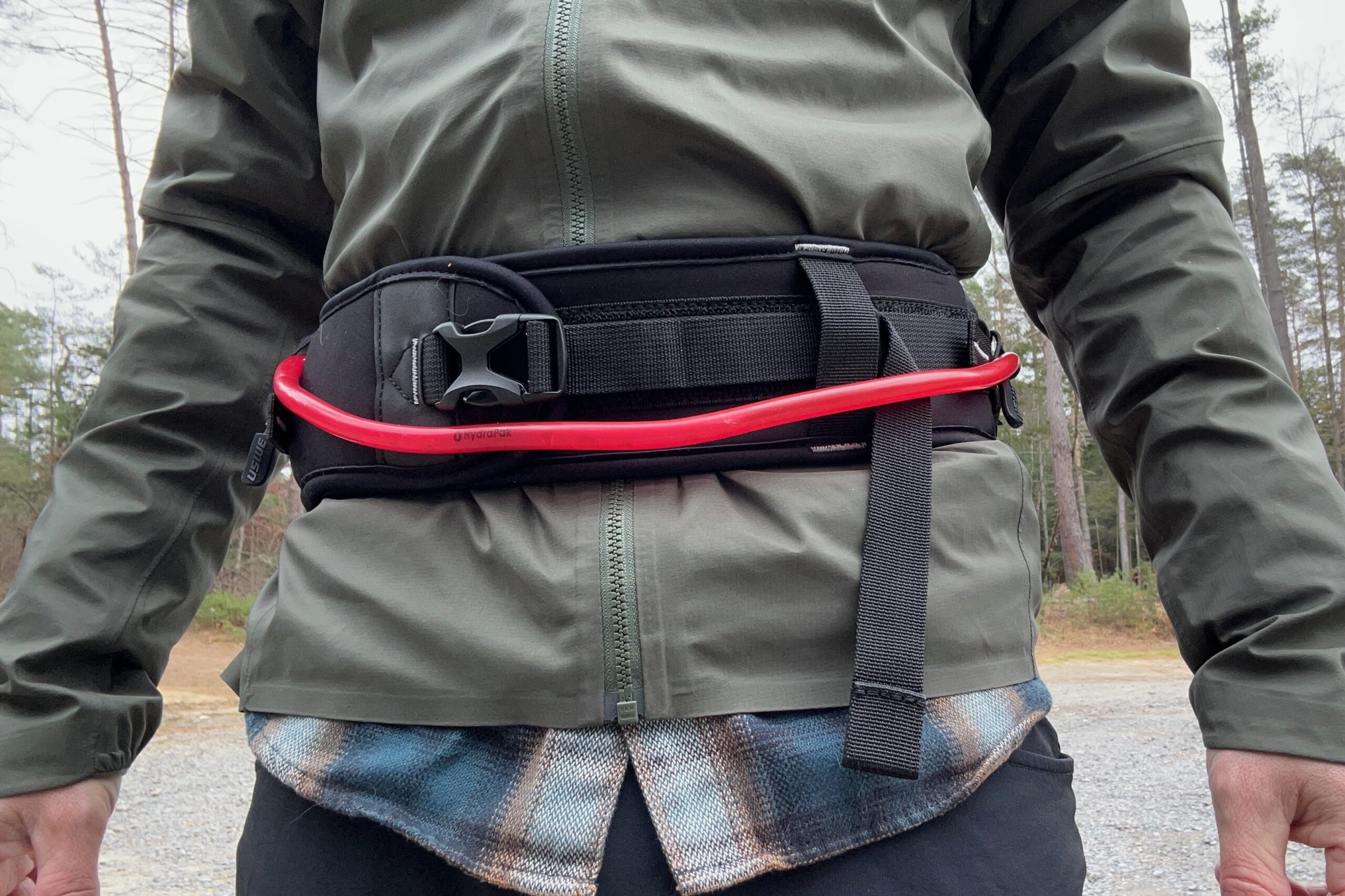
Ventilation
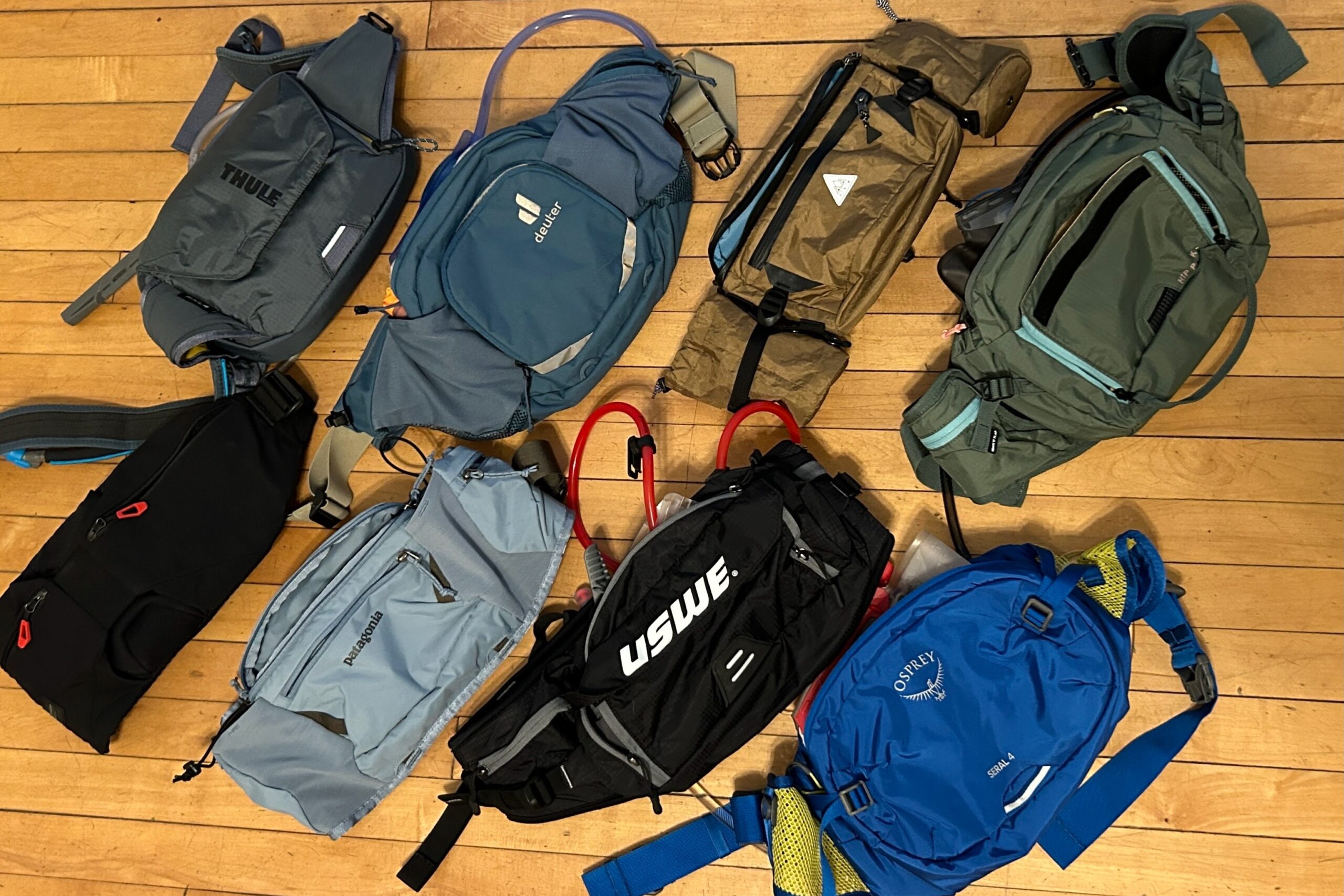
Price & Value
Budget
Mid-Tier

Premium
Frequently Asked Questions
Hip packs are one of several ways to bring your hydration and gear with you while you ride, and arguably one of the best. They allow you to bring more water, tools, and other gear than you can typically carry on your bike and in your pockets, so you can be well prepared for whatever you’ve got planned and most mechanicals that may happen along the way.
They also keep everything within arm’s reach for convenient access, and most feature organizational pockets, so your tools and other items are quick and easy to find when you need them.
Depending on what you need to carry while you ride, you can choose from hip packs with varying storage and water-carrying capacities to suit your specific needs. Many hip packs are also fairly adaptable and can carry lighter or heavier loads depending on the length of ride. Some of them can even fit about as much as many hydration backpacks.
Compared to backpacks, however, hydration packs sit just above the waist on your lower back for a lower center of gravity, better weight distribution, and stability. They also cover significantly less of your back, allowing for better breathability and sweat management.
It really depends on what you want to bring with you on a ride. Taking stock of all the things you need to carry – water, tools (multi-tool, bike pump/CO2, tube, tire levers, tubeless plugs, etc), food, phone, wallet (or money/card and ID), extra layers, gloves, pads, etc., should give you a rough idea of the size pack you’ll need to fit it all into. And, it’s also important to consider that what you carry on rides may vary based on the length of ride or the season.
Those who carry a water bottle on the bike and bring the bare minimum with them on rides may prefer a low-volume and low-profile option like the Bontrager Rapid Pack or High Above Venture. Most people will likely find the sweet spot in the medium-volume packs in the 3 to 4-liter capacity range, like the Evoc Hip Pack Pro 3L or the Patagonia Dirt Roamer.
Others who like to bring more on their rides, or who just like the option to do so, will be well served by looking at some of the larger capacity packs like the USWE Zulo 6L or the Deuter Pulse Pro 5. Again, it really just depends on the length of your rides and what you want to have with you out on the trail.
With the variety of hip packs on the market today, you can choose between models that carry water in a bladder, bottles, or both, or some that don’t carry any water at all. What works best for you really comes down to personal preference or your water-carrying needs, as both systems work quite well.
Water bladders carry up to 1.5 or 2 liters of water, have a clean look inside of the pack, conform to shape easily for comfort against the back or cramming things in a pack around them, and allow for easy drinking (even while riding) from a hose. That said, water bladders are a little more annoying to clean.
Bottles are also quite easy to drink from and far easier to clean than bladders. Their storage location varies on the hip packs we tested with some being super stable while riding and others moving around a bit on the back, but you’ve almost always got to reach around to grab them which is less convenient than the bladder systems. Either way, you can’t really go wrong, but considering your drinking preference and water-carrying capacity needs will likely steer you in one direction or the other.
Hip packs tend to get dirty from sweat or when riding in dusty or wet conditions. Their location on the lower back means they are placed right in line of fire from tire spray and they can get caked with mud. In general, they don’t need to be cleaned very often, and you can typically wipe off dirt or mud and let them dry out between rides.
Eventually, though, you’ll need to wash them, and it is quite easy to spray them down with a hose or hand wash them in the kitchen sink and let them air dry. Some packs can also be washed in a washing machine, but you definitely want to look up and follow any manufacturer’s recommendations when washing your hip pack.
Even more important is cleaning the hydration system. Bacteria and mold can and do grow in the moist environment inside the bladder, hose, and nozzle, so keeping it clean is important for your health and the taste of your water.
You can use dish soap, brushes, and/or cleaning tablets to get through the hose and inside the bladder. You can also use baking soda, lemon juice, bleach, or even denture cleaning tablets to kill bacteria. And, be sure to let everything dry before using it again.
There are lots of helpful tips that can be found online if you are unsure how to go about cleaning your hydration system. Whatever technique you use, be sure to clean your water bladder, hose, and nozzle regularly. Most bladders are not dishwasher safe — again, check with the manufacturer before using the dishwasher.
Yes! Pretty much any hydration hose can be shortened to your desired length. You can do this by pulling out the nozzle piece, cutting the hose to length with a sharp pair of scissors or a knife, and pressing the nozzle piece back in.
Related Content

The Best Bike Multi-Tools of 2025
We tested 12 of the best bike multi-tools on the market to help you find the right model to keep you rolling on the road or trail.

The Best Hitch Bike Racks of 2025
We tested the best hitch bike racks for 2025 with options for every budget. Top picks include Thule, Kuat, RockyMounts, and more.






















